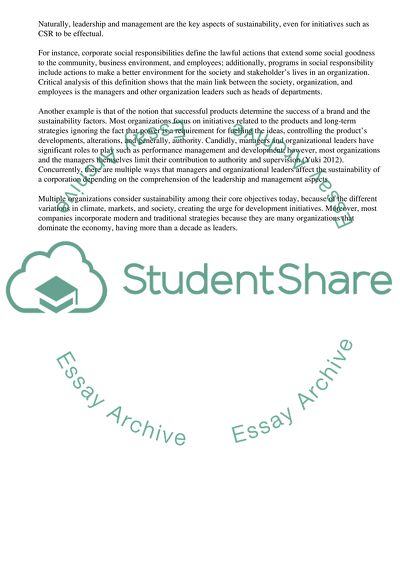Cite this document
(Leadership and Management as Facilitators of Sustainability Coursework Example | Topics and Well Written Essays - 2000 words, n.d.)
Leadership and Management as Facilitators of Sustainability Coursework Example | Topics and Well Written Essays - 2000 words. https://studentshare.org/management/1850544-leadership-and-management-are-both-needed-for-sustainable-organisations
Leadership and Management as Facilitators of Sustainability Coursework Example | Topics and Well Written Essays - 2000 words. https://studentshare.org/management/1850544-leadership-and-management-are-both-needed-for-sustainable-organisations
(Leadership and Management As Facilitators of Sustainability Coursework Example | Topics and Well Written Essays - 2000 Words)
Leadership and Management As Facilitators of Sustainability Coursework Example | Topics and Well Written Essays - 2000 Words. https://studentshare.org/management/1850544-leadership-and-management-are-both-needed-for-sustainable-organisations.
Leadership and Management As Facilitators of Sustainability Coursework Example | Topics and Well Written Essays - 2000 Words. https://studentshare.org/management/1850544-leadership-and-management-are-both-needed-for-sustainable-organisations.
“Leadership and Management As Facilitators of Sustainability Coursework Example | Topics and Well Written Essays - 2000 Words”. https://studentshare.org/management/1850544-leadership-and-management-are-both-needed-for-sustainable-organisations.


